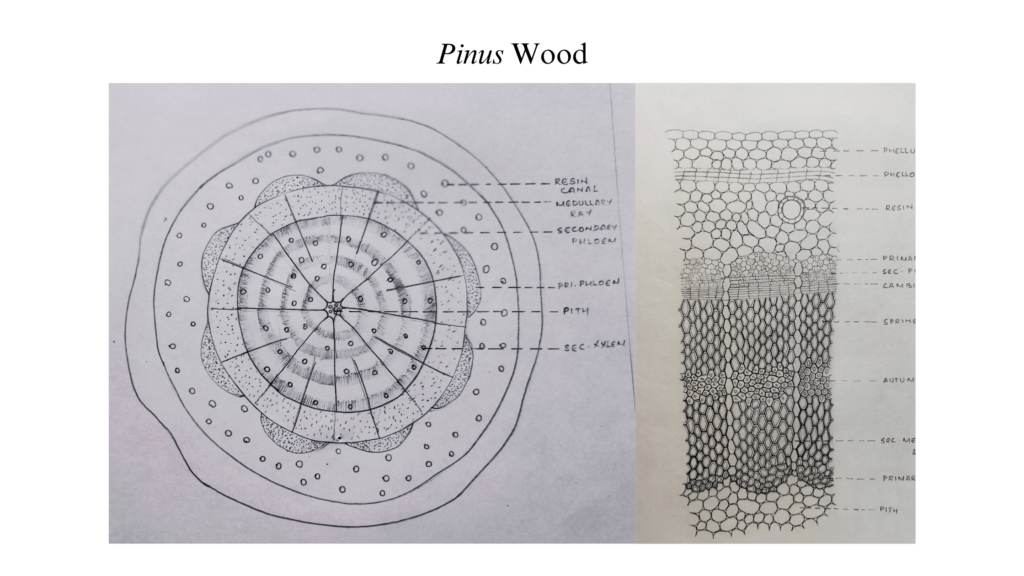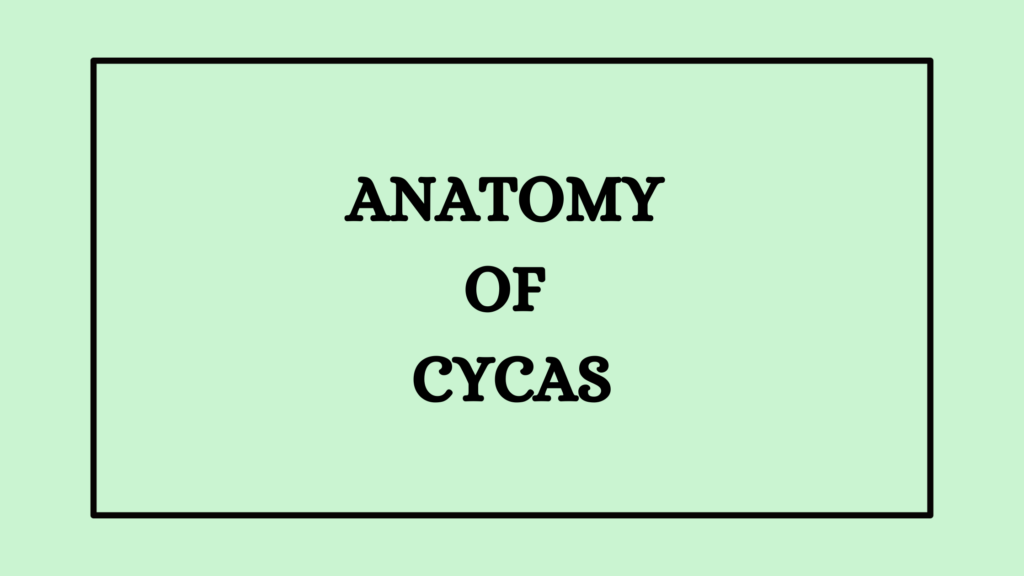Pinus shows a secondary structure similar to a dicot stem. Secondary thickening in the Pinus starts when the plant is older. The Pinus wood development starts by producing secondary tissues and with the increase in its girth.
The secondary tissues include the secondary xylem and phloem. Both these tissues are developed by the vascular cambium activity.
Initiation of Wood Development in Pinus
During the initiation of secondary growth, a complete ring of vascular cambium happens.
The medullary rays that are on the same line as the fascicular cambium of each vascular bundle become meristematic. They start functioning as strips of meristem known as interfascicular cambium.
Later, the interfascicular cambium joins with the fascicular cambium to complete the cambium ring. This cambial ring pushes the secondary phloem outwards and the secondary xylem inwards.
Radially elongated cells from the cambium give rise to secondary medullary rays. The cambium ring continuously produces xylem and phloem. This creates a compact xylem in the centre and narrow medullary rays. This is why Pinus wood is called pycnoxylic wood.
The secondary xylem consists of tracheids having bordered pits arranged in an uniseriate manner. Special thickenings of primary lamellae around and in between two pits. They are seen in the radial walls and are called bars of sanio (crassuale).

Annual Rings
The secondary xylem has two well-defined zones- spring wood and autumn wood. Xylem tracheids have wide lumens forms the board zone known as spring wood. Tracheids having narrow lumens form a narrow zone called autumn wood.
Spring and autumn wood zones are formed in a year and thus are called annual rings. The age of Pinus is calculated by counting the annual rings.
Other Features of Pinus Wood
A characteristic feature of Pinus wood is the presence of resin canals in the secondary xylem. It contains uniseriate medullary rays as well as multiseriate rays formed when they come in contact with resin canals.
Economic Importance of Pinus Wood
- Pine wood is strong and durable.
- It is used for making doors, poles for electric wires, boats, window panes, musical instruments, veneers, railway sleepers, paneling, etc.
- Turpentine oil obtained from pine wood is used as a solvent for paints, varnishes, and in the perfume industry.
- Pinewood oil is also used for making disinfectants, insecticides, denaturants, etc.
- Pinewood oil is widely used in industries such as textile and pharmaceutical industries.
References
- Abraham P C. Bryophytes, Pteridophytes, Gymnosperms & Paleobotany. 2000. St. Mary’s Books & Publications.
- https://bncollegebgp.ac.in/wp-content/uploads/2020/04/Pinus.pdf




